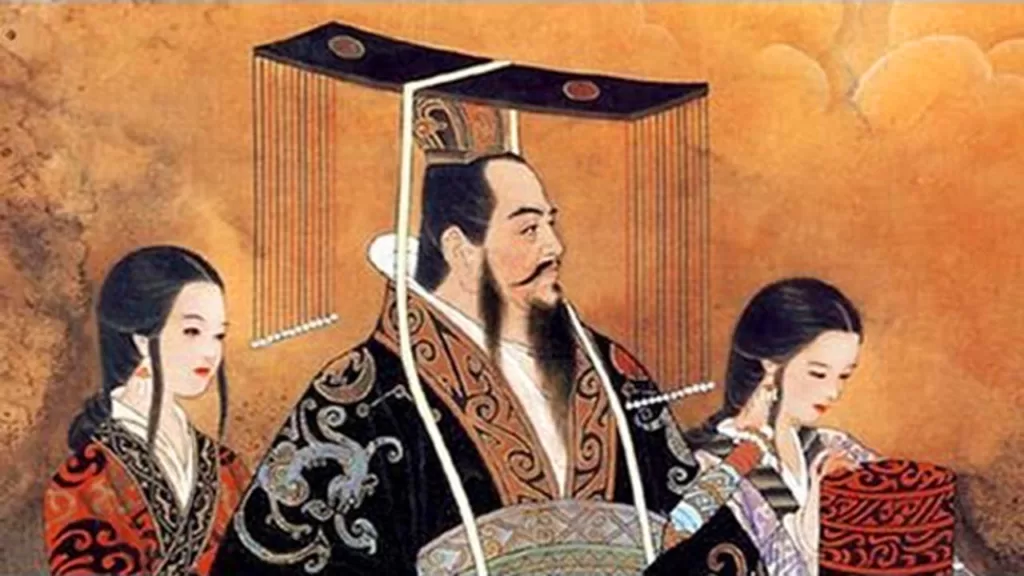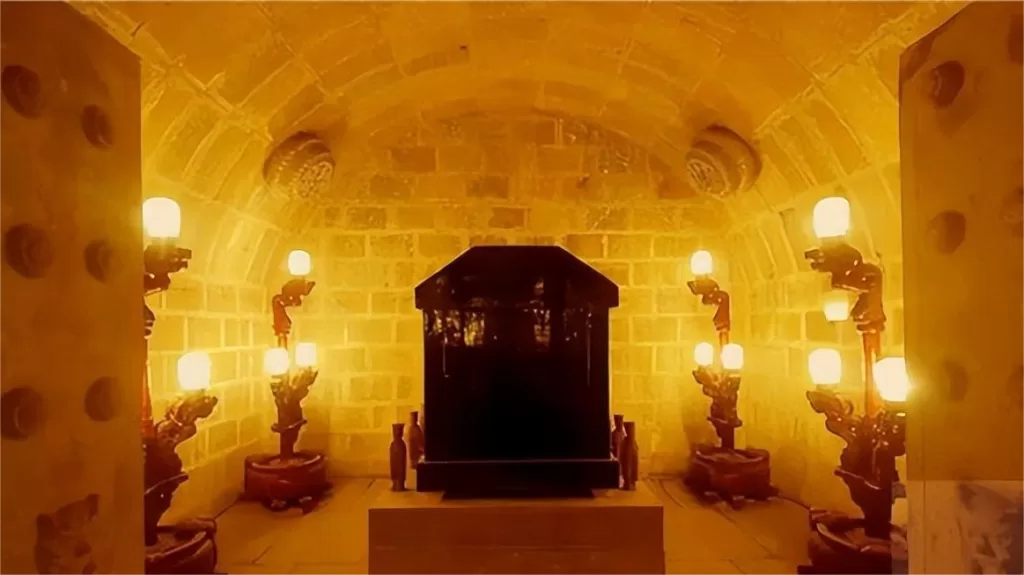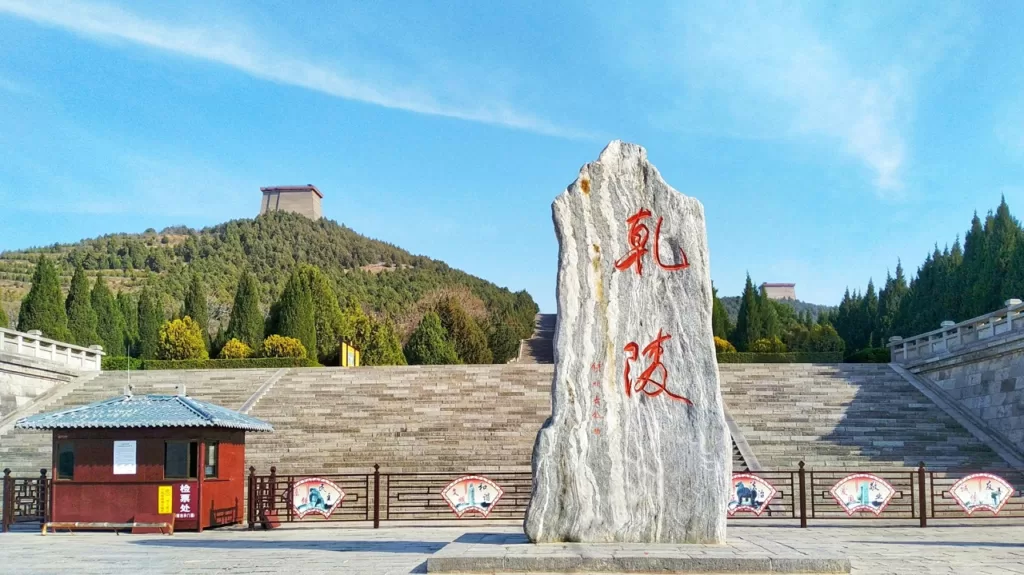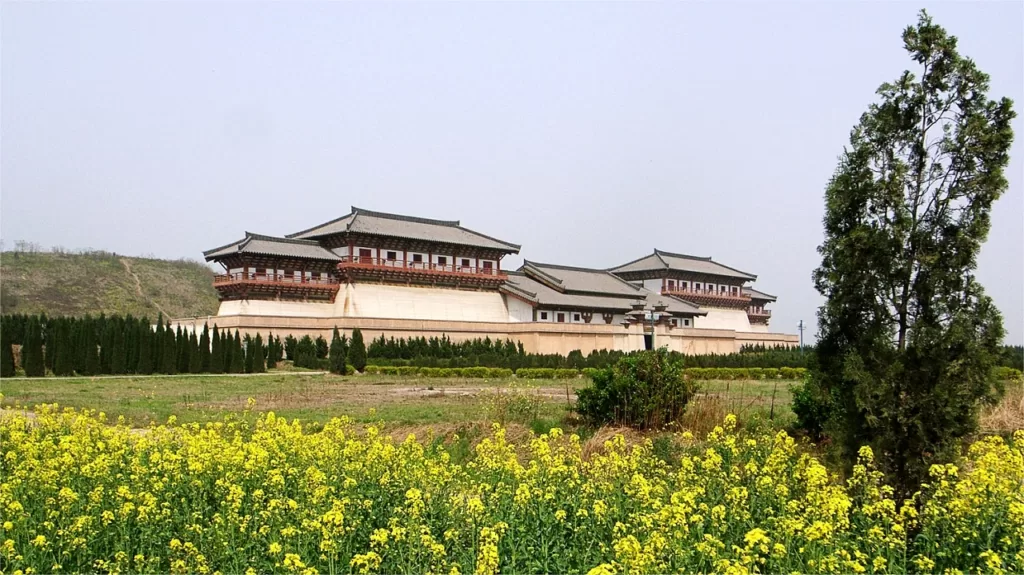The Mausoleum of the First Qin Emperor (秦始皇陵), also known as the Terracotta Army, is a complex of funerary monuments and tombs located in Lintong District, Xi’an, Shaanxi province, China. It was built by Emperor Qin Shi Huang, the first emperor of the Qin Dynasty, and is considered to be one of the most significant archaeological discoveries of the 20th century.
The mausoleum complex covers an area of more than 56 square kilometers and consists of various burial pits, palaces, and other structures. The most famous part of the complex is the Terracotta Army, which consists of over 8,000 life-sized terracotta soldiers, horses, and chariots that were buried with the emperor to protect him in the afterlife.
The Terracotta Army is divided into three pits, with the largest one measuring 230 meters long and 62 meters wide. Each figure is unique, with different facial expressions, hairstyles, and clothing. The army is accompanied by bronze weapons and armor, as well as bronze and stone chariots.
The mausoleum also contains other impressive features, including a large mound that covers the tomb of the emperor, as well as numerous pits containing a variety of other sculptures and artifacts. The mausoleum is considered to be an important historical and cultural site, and it has been designated as a UNESCO World Heritage Site since 1987.
Table of Contents
- Basic Information
- Location and Transportation
- Highlights of the Mausoleum
- Vlog about Terracotta Warriors
- Useful Tips Summarized from Reviews
- Related Facts
- Other Mausoleums in Shaanxi
Basic Information
| Website | http://www.bmy.com.cn/ |
| Estimated Length of Tour | 2 hours |
| Opening Hours | 8.30 – 17.00 (16th March – 30th September) 8.30 – 16.30 (16th November – 16th March the next year) |
| Ticket Price | 120 RMB |
Location and Transportation
The Mausoleum of the First Qin Emperor, also known as the Terracotta Army, is located in Lintong District, Xi’an, in Shaanxi province, China, about 35 kilometers east of the city center. Despite its relatively remote location, It is still pretty easy to get there.
Coach: Take the Mausoleum of the First Qin Emperor Express Coach at the City Library (145 Weiyang Road, Weiyang District, Xi’an. You can get there by subway) and get off at the Mausoleum. The journey takes about 1 hour and costs 30 RMB.
Highlights of the Mausoleum
The Terracotta Army

The Terracotta Army is a collection of thousands of life-sized terracotta figures of soldiers, horses, and chariots that were buried with the first emperor of China, Qin Shi Huang, in his mausoleum. The figures, crafted over two thousand years ago, were discovered in 1974 near Xi’an, China, and are considered to be one of the most remarkable archaeological finds of the 20th century. Each figure is unique, with individual facial features, hairstyles, and clothing. They were created to protect the emperor in the afterlife and serve as a testament to the incredible artistic and engineering skills of the people of ancient China.
The Burial Mound

The Mausoleum of the First Qin Emperor features a massive burial mound that covers the tomb of the emperor. The mound, which is over 50 meters tall and 300 meters in diameter, is surrounded by a moat and several underground chambers. The construction of the burial mound required an enormous amount of labor, with many workers spending years carving and transporting the massive stones used to create the structure. While the tomb itself remains unopened and largely unexplored, the burial mound and surrounding complex offer a fascinating glimpse into the culture and history of ancient China, as well as the incredible feats of engineering and construction that were accomplished over 2,000 years ago.
The Bronze Chariots

The Mausoleum of the First Qin Emperor contains two remarkable bronze chariots that were found in a separate pit. The chariots, which are over two meters in length and adorned with intricate detailing, are considered to be among the finest examples of bronze work from the Qin Dynasty. They were constructed with astonishing precision, with each component fitted together perfectly without the use of nails or other fasteners, and were likely intended to transport the emperor’s soul in the afterlife and are a testament to the incredible craftsmanship and artistic skills of the people of ancient China.
The Museum

The Mausoleum of the First Qin Emperor features a museum that houses a wide range of artifacts from the site, including the famous Terracotta Army and the bronze chariots. The museum provides visitors with an immersive experience that showcases the rich history and culture of ancient China, with exhibits that detail the construction of the mausoleum, the lives of the workers who built it, and the fascinating legacy of the Qin Dynasty. It also includes interactive displays and multimedia presentations that offer a deeper understanding of the significance of the site.
Vlog about Terracotta Warriors
Useful Tips Summarized from Reviews
Audio Guide: Consider renting an audio guide device, which offers real-time location tracking and detailed explanations. This allows you to fully understand the significance of each area you visit. The audio guide costs 30 yuan per device and requires a form of identification as collateral.
Organized Tours: If you prefer a hassle-free experience, especially for first-time visitors to Xi’an, joining a reputable local tour is advisable. These tours typically include transportation, accommodation, meals, and entrance tickets, along with guided commentary on the historical and cultural significance of Xi’an.
Transportation: Upon entering the Terracotta Warriors and Horses Museum, you may encounter offers for electric cart rides to Pit 1. However, Pit 1 is within a five-minute walk, making the electric cart unnecessary.
Additional Sites: After exploring the Terracotta Warriors, take advantage of the free shuttle bus to the Lishan Garden, where the tomb of Emperor Qin Shi Huang is located. There is no additional fee to enter Lishan Garden.
Avoid Sales Pressure: Be cautious of vendors selling Blue-Tinted Jade or other souvenirs aggressively. It’s advisable to purchase souvenirs from reputable sources to ensure authenticity and quality.
Entertainment Expenses: Avoid costly entertainment options such as the “Crossing the Great Qin” movie, which may charge 188 yuan per ticket. Focus on exploring the historical sites instead.












